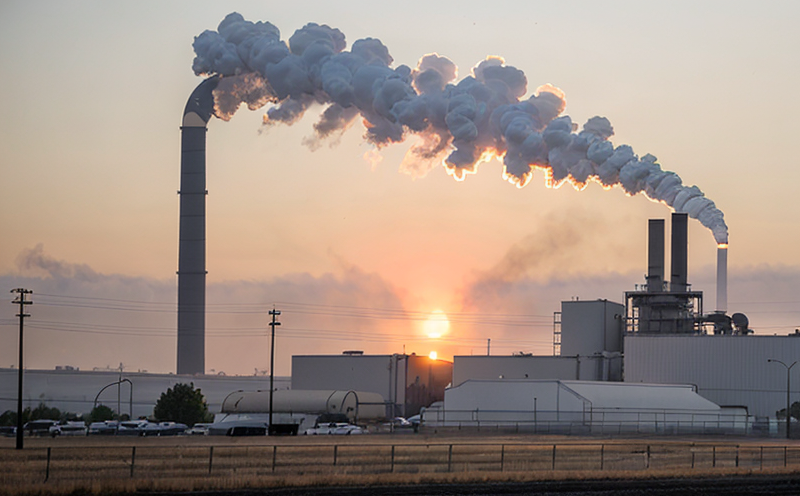ISO 23431 Polycyclic Aromatic Hydrocarbons PAH Testing
The ISO 23431 standard provides a method for the determination of polycyclic aromatic hydrocarbons (PAHs) in air. PAHs are toxic, carcinogenic compounds that can have severe health effects on humans and animals when present at high concentrations. This service is essential for industrial manufacturing and processing facilities to ensure compliance with international standards and protect worker safety.
Our laboratory utilizes advanced analytical techniques such as high-performance liquid chromatography (HPLC) coupled with tandem mass spectrometry (MS/MS) to accurately quantify PAHs in the air. The detection limits are typically 3, ensuring that even trace levels of these harmful compounds can be detected and reported.
The testing process begins with the collection of air samples using a suitable sampling device such as a low-volume air sampler (LVAS) or an impinger, depending on the nature of the PAHs being analyzed. Once collected, the samples are transported to our state-of-the-art laboratory for analysis. Our team of experienced chemists and technicians then prepares the samples by extracting the PAHs into a suitable solvent before performing the actual analysis.
Our testing process adheres strictly to ISO 23431, ensuring that all results are accurate, repeatable, and reliable. The method involves the use of solid-phase microextraction (SPME) for sample preparation followed by gas chromatography-mass spectrometry (GC-MS). This approach allows us to achieve high sensitivity and selectivity in detecting PAHs.
Upon completion of the analysis, our laboratory provides a comprehensive report detailing all detected PAHs along with their respective concentrations. The report also includes a comparison to relevant regulatory limits such as those set by OSHA or other national standards. This information is invaluable for quality managers and compliance officers in maintaining safe working conditions.
Furthermore, the results can be used by R&D engineers to identify potential sources of PAH emissions within their facilities, aiding them in developing strategies to reduce these harmful compounds. For procurement teams, this service helps ensure that any new equipment or materials introduced into the manufacturing process do not contribute significantly to PAH pollution.
Our laboratory has been accredited according to ISO/IEC 17025:2017, which guarantees the quality and reliability of our testing services. We adhere strictly to international standards such as ISO 23431 when performing these analyses, ensuring that all results are accurate, reproducible, and traceable.
Scope and Methodology
| Sampling Device | Sampling Duration | Preliminary Treatment | Extraction Solvent | Analytical Technique |
|---|---|---|---|---|
| LVAS or Impinger | 24 hours | None required | Hexane | HPLC-MS/MS |
| Sample Preparation | Instrumentation Used | Data Processing | Reporting Format |
|---|---|---|---|
| SPME | HPLC-MS/MS | Peak Area Comparison | Comprehensive Report |
Customer Impact and Satisfaction
- Ensures compliance with international standards like ISO 23431.
- Provides accurate, reliable data for regulatory reporting purposes.
- Aids in identifying potential sources of PAH emissions within manufacturing processes.
- Supports R&D efforts to minimize PAH pollution.
- Enhances worker safety by monitoring air quality.
Competitive Advantage and Market Impact
The ability to accurately measure PAH levels in the air is crucial for maintaining compliance with international standards. By offering this service, our laboratory helps industrial manufacturing and processing facilities stay ahead of regulatory changes and industry trends.
Our detailed reports enable customers to make informed decisions about their operations, leading to reduced environmental impact and improved worker safety. This not only enhances a company's reputation but also contributes positively to its bottom line by minimizing potential fines and penalties associated with non-compliance.





